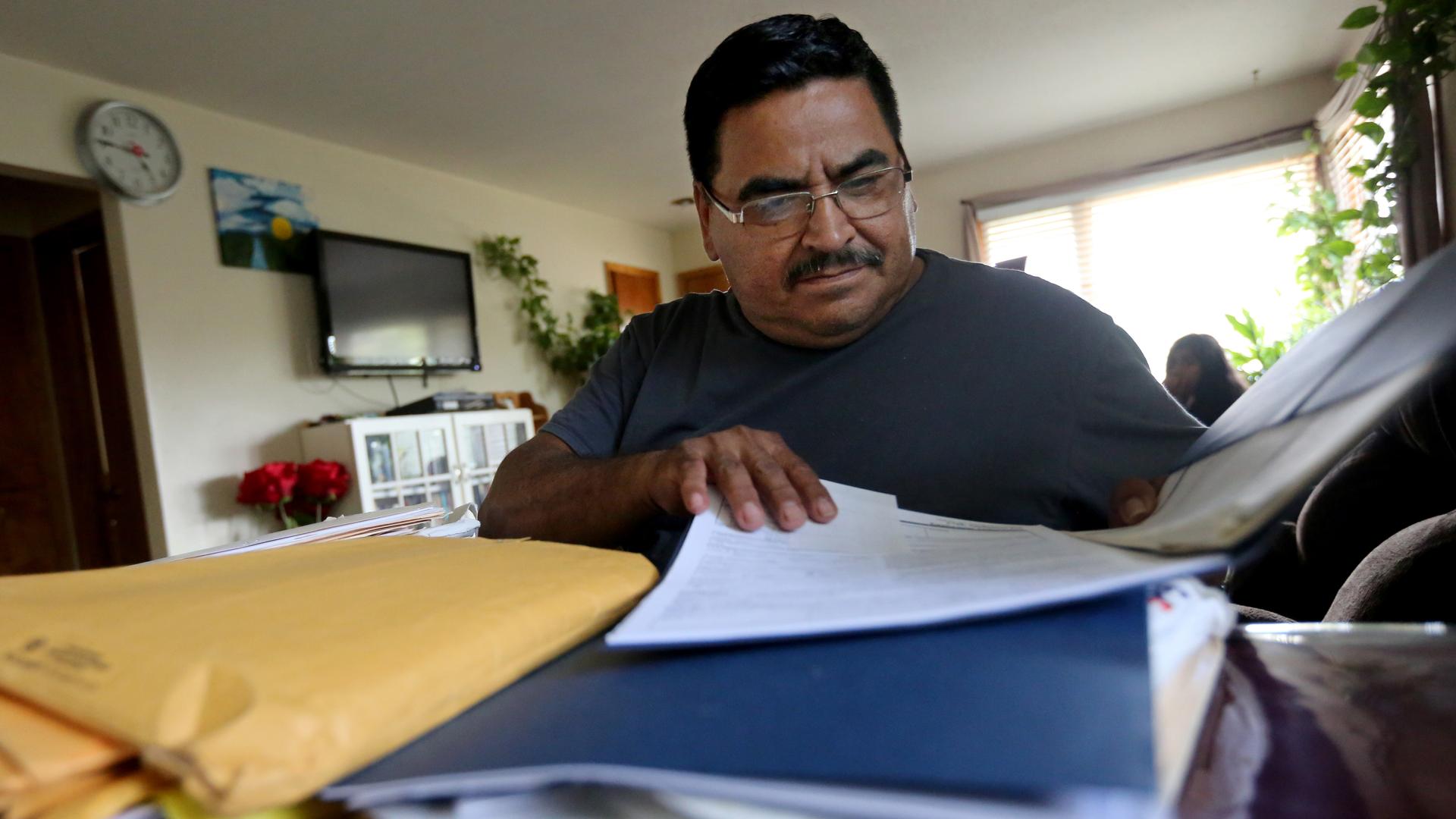When the government wrongly deports people, coming back to the US is almost impossible
Herberth Cortez Gaitan sorts through years worth of documents at his Sioux Falls, South Dakota home on July 20, 2018. He waited 16 years for his asylum application to be heard and denied. After he was deported, a federal court found that immigration courts ruled incorrectly — but it took two more years and piles of bureaucracy for him to return to the US from Guatemala.
Herberth Cortez Gaitan waited 16 years for his asylum application to be processed and rejected. It took nine more years for the courts to decide to deport him.
But, as it turned out, four months later, a US federal appeals court found that the government made a mistake.
On Dec 30, 2016, the US Court of Appeals for the Eighth Circuit ruled that lower immigration courts had “erred” in adjudicating Cortez’s removal to Guatemala. He needed to be allowed to return to his family. But coming back to the US when the government wrongfully deports you is a tortuous if not impossible process. It can drown out even a preacher’s jubilance.
Cortez, a pastor at a South Dakota Pentecostal church, was not allowed to return to the US for almost two years after that 2016 federal court ruling.
“It’s the type of pain that can kill a person, little by little, if you don’t put yourself in God’s hands,” says Cortez, 53. He spoke in Spanish about the despair of living away from his wife of 32 years and their seven children, and then the anguish of waiting to be reunited. Two months after he finally returned, he’s still waiting for the government’s permission to work.
The federal immigration agency, Immigration and Customs Enforcement (ICE), deported Cortez on Aug 26, 2016 before a ruling was made in his appeal to a federal court. So when the decision came four months later, he was already in Guatemala. He wasn’t allowed to come back to the US until May 10, 2018 — and even then, Cortez knows he is lucky to have been able to return at all. Most people don’t have the support or resources to appeal their deportations to begin with, let alone fight their cases from abroad.
“It’s very rare,” says Brian Blackford, a lawyer in Omaha, Nebraska who represents Cortez and coordinated his lengthy homecoming with ICE. The agency oversees both deportations and the process of returning to the US people who have been removed. “So few federal court appeals are filed for immigration cases, and even fewer are ultimately successful.”
PRI corroborated Cortez’s story with documents from his case files. They were obtained both from immigration agencies, through the Freedom of Information Act (FOIA) and from his attorney.
When immigration judges order deportations, cases can be appealed to the Board of Immigration Appeals (BIA), and then through regular federal courts. It usually takes a reversal by a federal court for ICE to provide the paperwork necessary to return someone who has already been deported.
The Eighth Circuit, Blackford says, has fewer cases than coastal or border circuit courts, but is also one of the most conservative in the country. “Not many appeals are sustained, which has a chilling effect.”
The Eighth Circuit covers North and South Dakota, as well as Nebraska, Minnesota, Iowa, Missouri and Arkansas.
In 2016, the Eighth Circuit decided 63 appeals of immigration court rulings. It reversed just four of those decisions.
The underlying problem is that immigrants in removal proceedings fight long odds. Nearly 40 percent of them can’t afford legal representation, despite nationwide efforts to increase access to counsel, according to a 2017 report by the Vera Institute. If an immigrant is in detention while arguing his or her case, only 35 percent find an attorney. The US deported 226,199 people in fiscal year 2017, and more than 3 million during the Obama administration — which makes for a lot of non-citizens who faced trained government litigators alone.
Finding lawyers with the skills to argue cases in federal courts, where litigation is much more complex, is even more difficult, according to Alina Das, the longtime lawyer for Ravi Ragbir, the executive director of the New Sanctuary Coalition in New York, which advocates for immigrant rights. He made international headlines when he avoided his own deportation in January.
The government is now detaining more immigrants. Now, more deportations could occur before immigrants have the chance to complete their appeals. Attorney General Jeff Sessions has told immigration judges to stop issuing “administrative closures,” which allowed the courts to pause deportations when individuals might have been eligible for a visa or a green card, or have other extenuating circumstances. Postponing their cases gave them time to sort things out.
The new policy, says Trina Realmuto, directing attorney in the Boston office of the American Immigration Council, increases the potential that the government will conduct “wrongful deportations.”
Sixteen years to get an asylum interview
Cortez’s journey in the US began in January 1990, when he fled Guatemala to escape death threats by guerrillas, insurgent forces that fought the Guatemalan government during the country’s protracted civil war. The US was heavily involved in the war, and consistently supported the Guatemalan government despite its human rights abuses. Cortez’s wife, Reyna Perez, followed him to the US at the end of 1990 and Cortez filed for asylum on Nov. 21, 1991. Perez was added as a spouse to the application.
US Citizenship and Immigration Services (USCIS), however, took a very long time to process not only Cortez’s request, but also many other applications from Guatemalans, Salvadorans, Nicaraguans and other Central Americans who were seeking refuge from political unrest at home.
Cortez was finally called for an asylum interview in March 2007, 16 years later.
By then, the family had established deep roots in their adopted country. They lived in Sioux City, Iowa, where they have many relatives, and were expecting the last of their seven children. The youngest two are US citizens. Cortez and Perez continued to annually apply for renewals of their work authorizations, which allowed them to earn a living.
But Cortez’s past haunted him both in Guatemala and the US. At 19, he had been drafted by the Guatemalan military and served for three years, which later made him a target of the guerillas. USCIS decided that having fought for the Guatemalan military was not a good enough reason to seek asylum and denied his request.
Meanwhile in 1997, the US Congress had passed the Nicaraguan Adjustment and Central American Relief Act (NACARA), a law that gave asylum-seekers from Guatemala, Nicaragua, Cuba, El Salvador and nationals of former Soviet bloc countries a separate path to legal residency. NACARA also became a landmark example of how administrative closure was extended to an entire group of immigrants whom the government wanted to deport, to allow them time to apply for this new program.
In 2008, Cortez and Perez were referred to immigration court in Omaha, Nebraska. Their plan was to appeal USCIS’ decision.
But immigration courts were flooded with cases, a backlog that has only grown worse over the years — there are currently more than 700,000 cases waiting to be heard. Cortez’s proceedings didn’t begin until 2010.
The new application for legal residency based on NACARA seemed straightforward to Cortez’s lawyer. But both the immigration court and the Board of Immigration Appeals (BIA) denied their application, which sustained the removal order against him and his wife. Even though Cortez was a drafted, rank-and-file soldier in Guatemala’s military, the BIA said he was complicit in the mistreatment of war prisoners. The court’s reasoning confounded Blackford, who began representing Cortez in 2016.
“They said that he never saw or participated in any mistreatment,” says Blackford. “But he had ‘heard that some prisoners were poorly treated.’ That was the language.”
Blackford appealed the case to the Eighth Circuit, which agreed that both the immigration court and the BIA did not apply the law correctly.
“You must have levels of review,” says professor Daniel Kanstroom, director of the International Human Rights Program at Boston College, “because you cannot permit the government to just bury its mistakes by deporting people, and saying ‘we have nothing more to do with you’.”
Cortez made his appeal to the federal court in May 2016. ICE first tried to deport him, but not Perez, on July 11, 2016, but his Guatemalan passport was expired. The agency told him to renew it, and keep checking in with immigration agents every week. Cortez did both. After his last appointment in the Sioux Falls office, ICE told him to send word to his family to pack him a 40-pound suitcase. A family friend and two of his sons dropped it off at the Freeborn County Jail in Minnesota, where he was being held, and saw Cortez one last time. He was detained for two more days, transferred to a detention facility in Louisiana, and then deported to Guatemala City on August 26, 2016.
Cortez’s ’s family was in shock — and financial trouble.
Nine years until deportation
It was really hard seeing all her children cry. That’s what Perez remembers about the day they learned that her husband was going to be deported.
“They all cried, from the youngest to the oldest, and there was nothing I could do,” she says. She worried that she too would be deported.
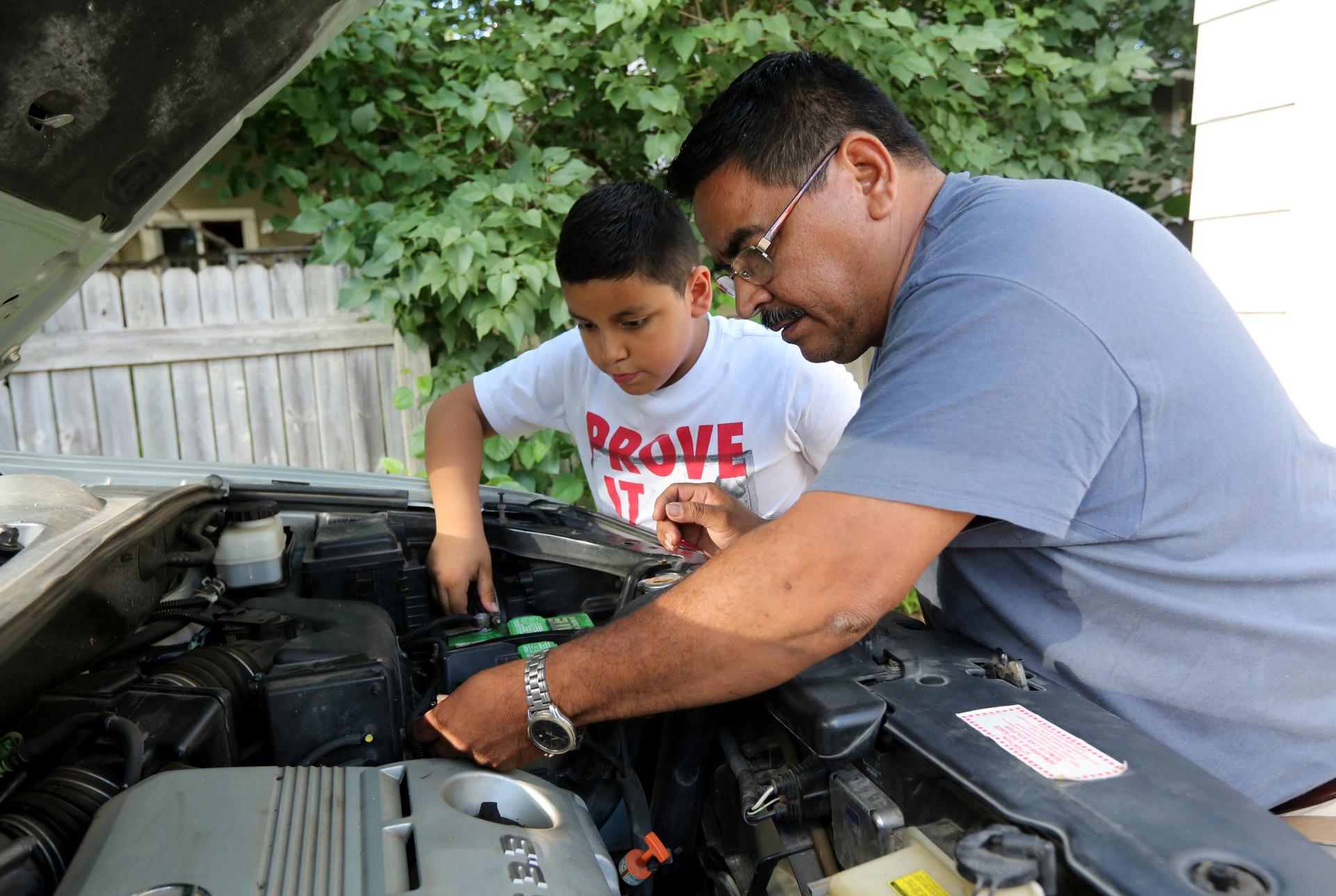
“I would look out the window, I wouldn’t see him there,” says Josue Cortez Perez, who is now 10. “I didn’t know what to do, because my heart was broken.” He’s the youngest of six sons and one daughter.
The Cortezes are a large household of modest means. Perez has worked as a babysitter, cleaning lady and cook while raising the children, while Cortez washed dishes in restaurants, worked at a leather factory and, since 2008, made kitchen cabinets as a carpenter in Sioux Falls, South Dakota, where they moved when they became Pentecostal pastors.
The legal battles have cost them $20,000 in lawyers’ fees so far, they say. They’ve never been able to save money.
Perez made about $600 a month in her jobs, while Cortez — before he was deported — made about $1,600 per month. Sometimes, they had to reach out to their siblings, many of whom live in the US, to help pay the lawyers.
Then in May 2017, while Cortez was trying to return from Guatemala, Perez was diagnosed with neck cancer. The disease is not yet in remission.
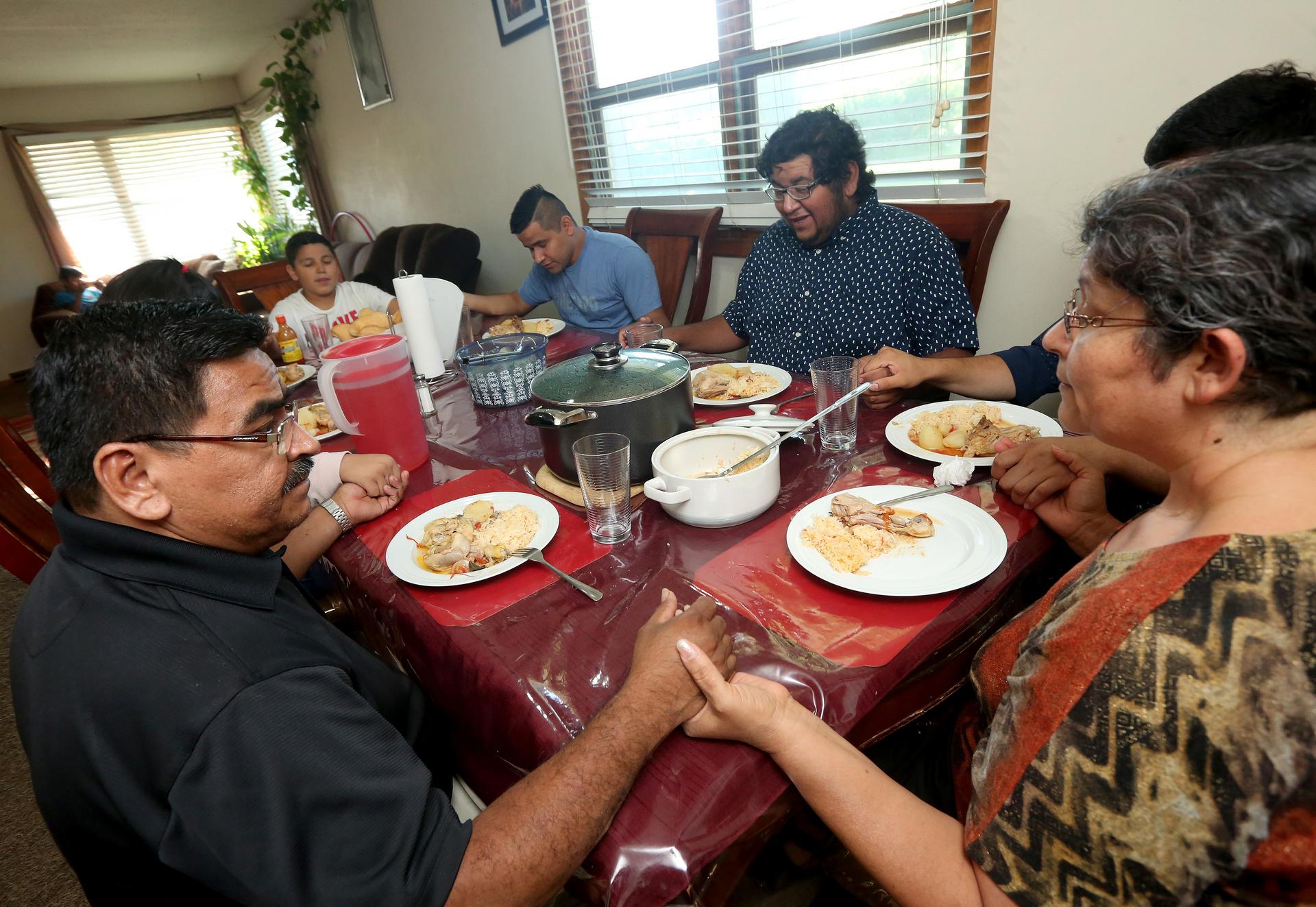
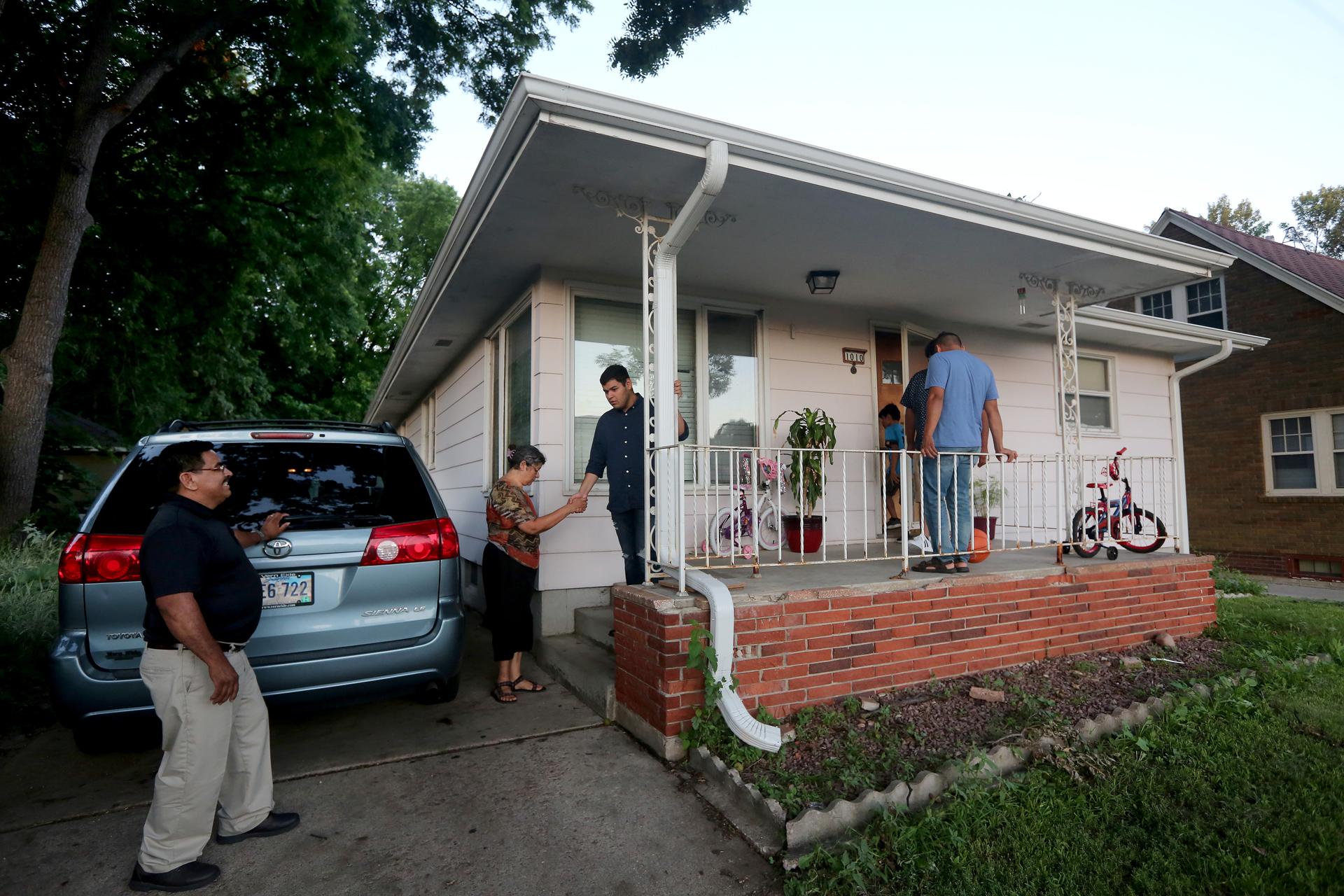
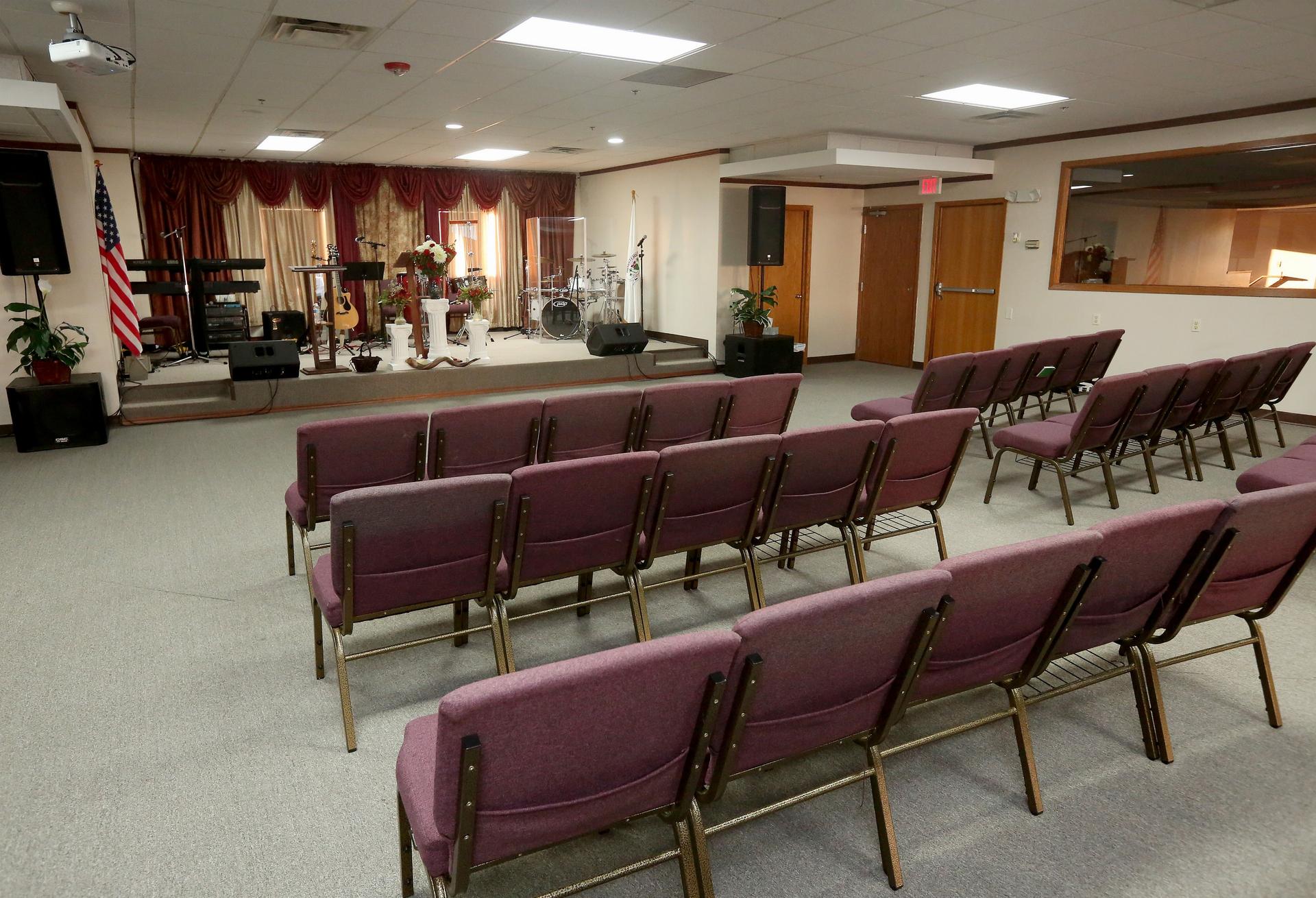
Faith and community were the family’s saving grace. In Sioux Falls, they established Iglesia Dios Es Amor, a new chapter of the Pentecostal church they belonged to in Sioux City. Their small house is ten minutes away from the church.
While the Cortezes don’t draw a salary from their ministry, the Pentecostal church pays the rent on their house and gives a stipend to Perez, who devotes her time to the 65-person congregation, and more recently to her cancer treatments. Cortez’s carpentry used to supplement their income, but he couldn’t make enough to leave much behind to help during his two-year deportation in Guatemala.
Cortez’s time in exile was difficult.
“Pasavan muchas cosas,” says Perez. “Much was happening.”
To ease her mind at night she would read the bible, listed to Christian music and, sometimes, just cry herself to sleep.
Some of her sons’ friends would come by the house and give the family prepaid cards to buy food. The mother of one of Perez’ sons brought them meat from her farm. Relatives and people from the congregation offered both material and emotional help.
It was a lot of responsibility for their older sons to shoulder. Gerson Cortez Perez, 28, the second-born, remembers coming home and seeing his mother on the couch, not feeling well.
“I would love for my dad to be here,” he thought. “To handle a lot of the stuff, because I feel like I’m not good enough.”
Elio Cortez Perez, 21, had a hard time getting the long-distance calls from Guatemala. Talking to his father, and not knowing when the family would be together, hurt him.
“I almost felt like I had PTSD for a while,” he says. “I would shake, I would cry for three hours. I couldn’t contain myself.”
“We got broken,” says Gerson. “And we are pretty united.”
Two years away and five more months to get back to the US
On Dec. 30, 2016, Blackford called his client in Guatemala. The Eighth Circuit had ruled in his favor. Cortez could come home.
“Fue’ una gran bendición,” Cortez says. “It was a great blessing.”
He got the call in Santo Domingo Suchitepéquez, in southwestern Guatemala, where he was living with his elderly mother. Perez was in Sioux Falls, at their church, preparing the congregation to celebrate the end of the year.
“It was the most moving day of our lives,” she says. “There were so many emotions.”
Perez and her congregation gathered. They started thanking God, crying together and hugging each other.
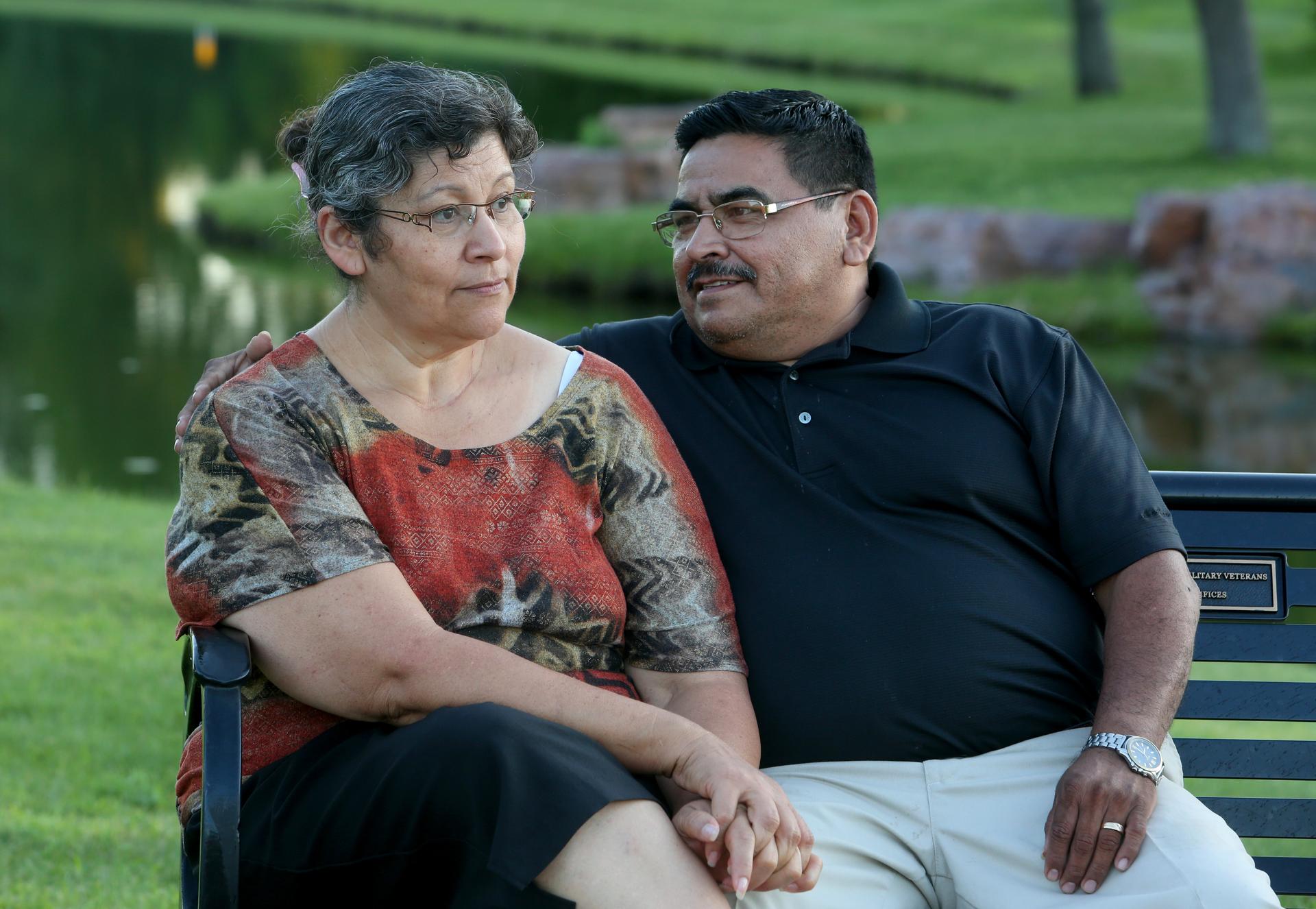
Cortez experienced his share of desolation while deported. News of his wife’s disease and the medical bills kept him up at night. His solution was to work as hard as possible as a farmhand or at a local grocery store, so that at night he would be too exhausted to lie awake. He was making Guatemalan centavos on the US dollar to pay for his own survival. He had nothing left to help his family.
The US return process is paved with bureaucracy that tested both the family and their lawyer. Once Cortez was found to be wrongfully deported, it took ten months for the case to be sent back to immigration courts. The court then scheduled a hearing to relitigate the case in January 2018, but the ICE office in Omaha told Blackford that they needed more time to coordinate Cortez’s return to the US. The immigration judge pushed the hearing date back even further, to September 2018.
But now, ICE told Blackford, the case was set too far out and postponed working on his client’s return. Blackford thinks the Omaha field office was getting set back by directives from ICE headquarters in Washington, DC.
ICE declined to answer questions about how the return process is facilitated. On its website it offers this advice to those trying to return from deportation: “Your removal will not affect your right to continue to pursue your case before the court of appeals. Although you may be abroad for the pendency of your case, that does not preclude the court of appeals that is currently reviewing your petition for review from deciding your case.”
Meanwhile, in Sioux Falls, Perez and the children were struggling. In Guatemala, Cortez began to fear that he would never return.
“I said goodbye three times,” he says. He would get ready for a certain date, then plans would be canceled. It didn’t help that he had to pay his own airfare of about US $800. ICE says that it provides the paperwork people who were deported require to return, but does not assist in travel.
Luckily, his family in the US raised the money.
Nancy Morawetz, who teaches law at New York University and is an expert on return policy issues, says by email that it’s “pretty clear that ICE uses ability to pay as a way to keep people from being able to return.”
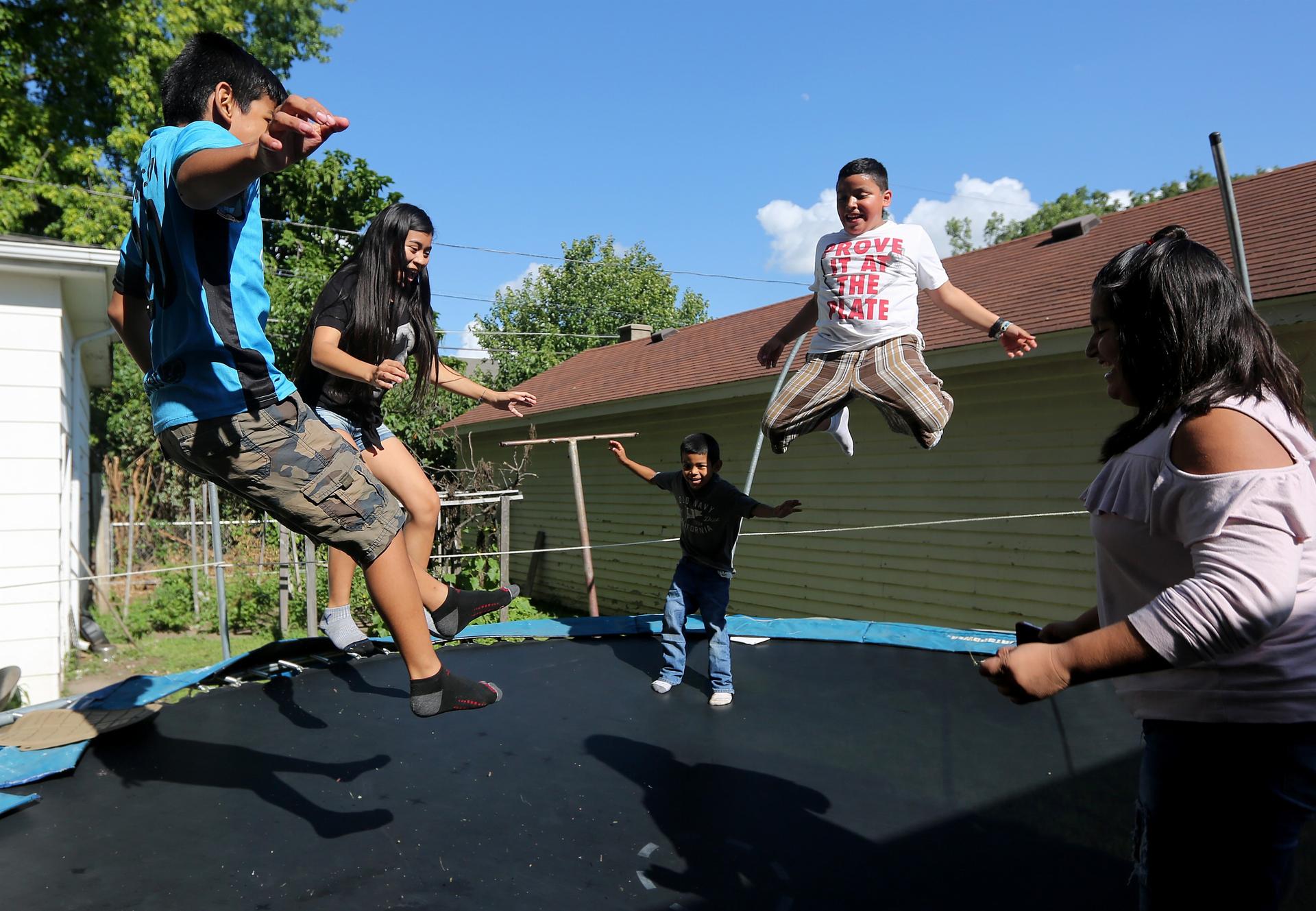
On the phone the day before he was finally scheduled to fly back on May 10, Cortez said that he felt left behind in Guatemala.
“My concerns are that my kids were actually born in the United States, some of them, and some of them are authorized to work in the United States,” he said then. “And I feel like I’m just abandoned here, because I am away from my family.”
Blackford was especially frustrated by ICE’s “too much time” rationale. Regardless of when he was allowed to return or when his hearing was, Cortez would be “paroled” into the country. That means that ICE would take him immediately into custody upon entering the US and detain him and reschedule his hearing anyway.
ICE’s policy is to return deportees to the immigration status they had before they were removed. And even though Cortez’s deportation had effectively been vacated by the Eighth Circuit, ICE still considered him an “inadmissible alien,” according to their documents about his case. He was put into the “detained docket” — those whose hearings happen while they are in immigration detention.
Blackford was puzzled. Bringing people back had never been for the faint of heart, but he felt that he was dealing with a whole new level of obstruction.
“It’s like the goal posts are always moving, there’s no predictability,” he says.
Matthew Hoppock, a lawyer in Overland Park, Kansas, says he has faced similar hurdles. He believes that there might be undisclosed modifications to ICE’s policy on returning people who have been deported.
The new administration hasn’t announced any changes, he says, “but when we go to ask for return in cases that used to have no problem, now ICE is saying, ‘No’.” Of two clients he has been trying to bring back, he has so far succeeded in bringing back only one.
“If a person’s return can’t be facilitated, then they should stop deporting people with pending appeals,” says Hoppock. He’s considering suing the government, if ICE won’t follow its own return policy.
Heather Drabek Prendergast, a Cleveland-based attorney and former ICE committee chair of the American Immigration Lawyers Associations (AILA), says “there seems to be an effort underfoot to make things less transparent.” AILA itself is not getting the information that it used to from the federal government.
“Guidance that in the past would have been routinely provided, through our communications with ICE, they’re no longer sharing,” she says.
Kanstroom says that things got worse after January 2017, when Donald Trump took office.
“It was never easy, even during the Obama administration,” he says. “Now, I think we’re back to the black hole where you really have to fight a lot harder to get the government to do its job.”
And so, Blackford fought. He filed a motion with the immigration judge to, in his words, “lay it all out.” He asked the court to set a closer hearing date and “order ICE” to return his client. ICE argued that the judge had “no jurisdiction, nor power” to order the agency to bring back Cortez, says Blackford.
But he did obtain a new hearing date: May 15, 2018. On May 10, Cortez arrived at the airport in Houston, Texas. ICE placed him in immigration detention and, after a few days, transferred him to the Council Bluffs Jail in Pottawattamie County, Iowa. He was detained there for two weeks, alongside people who had been charged with or convicted of crimes. Blackford went to the May 15 hearing with Perez and told the judge that his client was returned but in detention. He got another court date: July 12.

To get Cortez out, his family again relied on their closest friends and relatives to cover a $3,000 bond. He was released in time to attend his son Herbert’s high school graduation. Now, he says, he’s waiting for new work authorization. Cortez applied in June but is worried about the backlog there too.
“It’s Orwellian,” say Blackford. “I mean, you can write a movie about it. There’s an incredible amount of barriers, that most people don’t realize.”
Two more years for a new hearing
Morawetz, at New York University, says that it’s hard to know how many people who have been deported might have actually have had legal grounds to stay.
“I wish we had numbers,” Morawetz says. “Unfortunately, the cases we know about are cases with the best lawyers, who will do everything they can for their clients.”
Drabek Prendergast says AILA lawyers asked about returning deported people at their most recent meeting with ICE on April 12. They wanted statistics, for fiscal years 2014 through 2018 of the number of individuals who have prevailed in appeals in federal courts and requested re-entry to the US. And they wanted to know the number of individuals who were actually returned by ICE.
“ICE responded that there are not any statistics available,” says Drabek Prendergast. “Over the past six years, AILA’s liaison committee asked about this, and statistics have never been provided.”
PRI reached out to ICE multiple times for the same data AILA has been requesting and to find out if their policy on returning people who have already been deported has changed. The agency again sent links to their website and suggested that PRI submit a Freedom of Information Act request for the data. PRI made the request recently, but the government has not yet supplied the information.
As of June 30, 2018, government data shows that 26,497 requests to reopen deportation cases were filed with immigration courts this fiscal year (which started October 2017), and 4,740 with the Board of Immigration Appeals. The data does not say if people making these appeals have already been deported.
If an immigrant is already removed but wins their appeal in those courts, says Realmuto of the American Immigration Council, they should be returned to the US. “But ICE’s policy does not expressly cover people who prevail administratively.”
ICE’s return policy covers those people who win appeals in federal courts, like Cortez. It does not say how to handle cases in which either the immigration courts or the BIA decide that someone was wrongfully deported.
Morawetz says she is aware of many cases where the government has taken the position that it does not have to allow people to return on the basis of an immigration court or BIA decision. In some of those cases, people who were deported were sometimes allowed to return if they have a persistent attorney.
After everything that’s happened, Cortez is grateful for his “blessings.” His first post-deportation hearing was held in immigration court in Omaha on July 12. A trial to re-litigate his NACARA application is scheduled for October 2020.
Blackford is hoping to negotiate a sooner date with ICE. Cortez plans to keep pursuing his case.
“There was no point in time when I felt I had to stop,” says Cortez. “God moved all this process in our favor. He has a plan for us.”
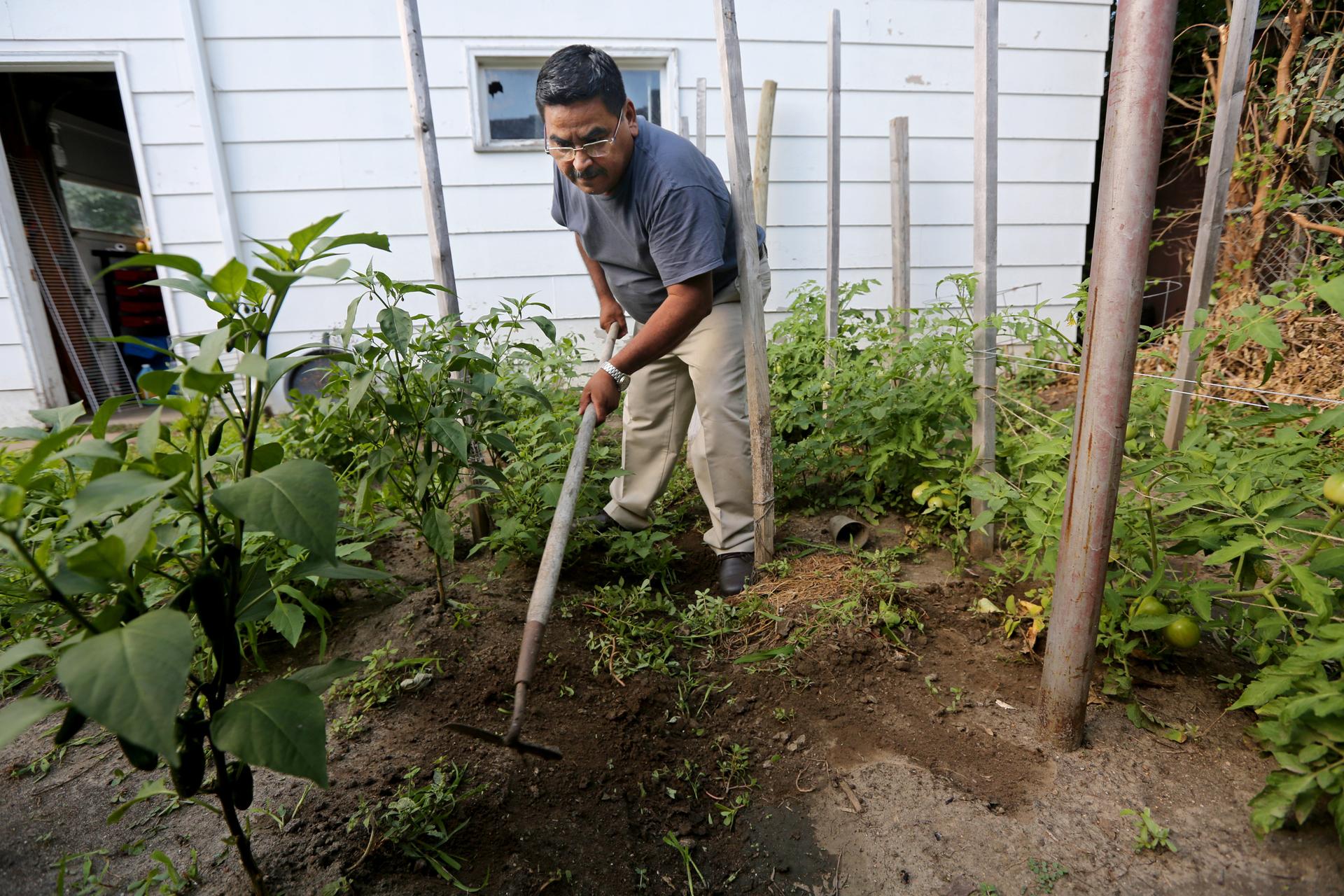
Our coverage reaches millions each week, but only a small fraction of listeners contribute to sustain our program. We still need 224 more people to donate $100 or $10/monthly to unlock our $67,000 match. Will you help us get there today?
